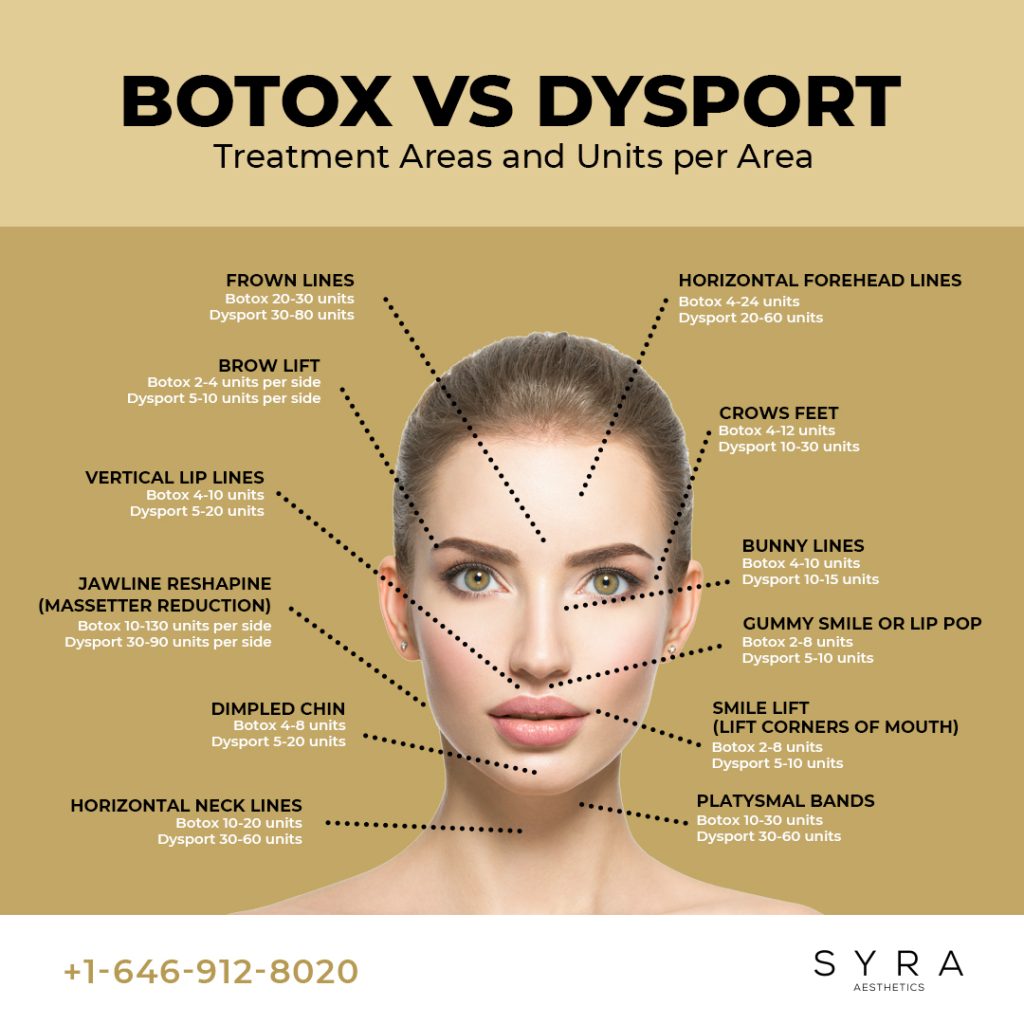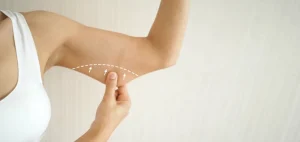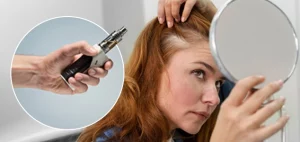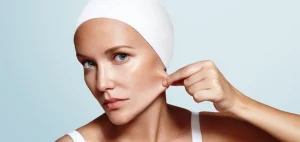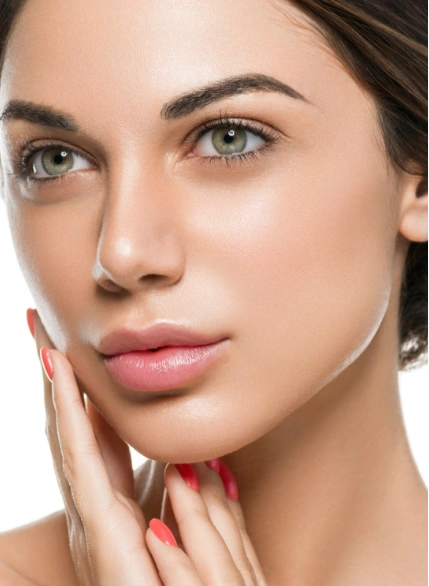Table of Contents
People seeking answers about “Botox vs Dysport” is not a new question. Both treatments are non-surgical and known for delivering effective results. Dysport is specifically approved for treating glabellar lines, while Botox can address a wider range of areas, including crow’s feet, frown lines, bunny lines, and glabellar lines.
To learn more about the comparison of Botox and Dysport, keep reading on:
Exploring Botox: A Versatile Treatment
Botox, originating from the bacterium Clostridium botulinum, is a well-established neuromodulator. Commonly referred to as Botulinum Type A, it’s employed in precise amounts to diminish fine lines and wrinkles. Botox works by blocking nerve signals in facial muscles, reducing excessive contractions and resulting in smoother skin. While improper usage can lead to harmful botulism symptoms, when administered by a certified professional, it remains safe and effective.
Botox, the pioneering FDA-approved Botulinum Type A neuromodulator, made its debut in 1989 and received approval for cosmetic use in 2002. Its versatility extends to addressing various medical conditions as well.
Dysport: Focused and Fast-Acting
Dysport targets glabellar lines, the vertical wrinkles between your eyebrows, also known as frown lines. These lines can make you feel embarrassed when you squint or frown, and they become more prominent with time if left untreated.
Dysport has established itself as Botox’s European counterpart, with a presence in over 60 countries worldwide. Similar to Botox, Dysport is an injectable neurotoxin derived from Botulinum Toxin Type A. It functions by blocking nerve signals in specific muscles, resulting in muscle relaxation and the smoothing of the skin.
Botulinum Type A is Dysport’s active ingredient. Once injected, it blocks nerve signals in the vicinity, reducing muscle activity, which leads to muscle relaxation. This, in turn, results in a smoother appearance of the skin.
The Key Differences Between Botox and Dysport
While Botox and Dysport do share some similarities, there are also key differences. One significant difference lies in their molecular makeup, influencing how they distribute and take effect. Dysport, with its smaller molecules, tends to produce quicker results than Botox. However, this trait also means that Dysport has a greater propensity to spread, potentially affecting nearby muscles.
Another factor that sets them apart is that Dysport is specifically approved for treating glabellar lines, while Botox has a broader range of applications, addressing multiple areas.
Types of Botox
Botox offers a variety of formulations, including Botox Cosmetic and Botox Therapeutic, tailored for specific medical or cosmetic needs. Another noteworthy variation is Baby Botox, often known as “micro-Botox” or “mini-Botox.” This specialized procedure employs Botulinum Toxin Type A in a more diluted form to target fine lines, wrinkles, and expression lines. Baby Botox provides a gentler approach, allowing for a subtle, natural look that reduces the early signs of aging while preserving facial mobility.
Botox Alternatives
While Botox is a widely popular non-surgical treatment for wrinkles, there are noteworthy alternatives in the market. Dysport, in particular, has gained recognition as a compelling option. Both Dysport and Botox employ Botulinum Toxin Type A to relax muscles and reduce wrinkles. Dysport’s smaller molecules can lead to quicker results in some cases, setting it apart as a fast-acting alternative. This unique characteristic has contributed to Dysport’s popularity, offering patients a valuable choice alongside Botox in the realm of non-surgical cosmetic enhancements.
Botox Treatable Areas
Botox offers a broad spectrum of treatable areas, making it a versatile solution for various cosmetic and medical concerns. It can effectively target forehead lines, crow’s feet, frown lines, chin wrinkles, nose wrinkles (bunny lines), eyebrows, lines around the mouth, and even neck wrinkles. Beyond its cosmetic applications, Botox has proven effective in addressing medical issues such as excessive sweating and migraines, providing a comprehensive range of treatment options for patients.
Dysport Treatable Areas
Dysport, on the other hand, also demonstrates versatility in treating various facial wrinkles, notably glabellar lines located between the eyebrows, and crow’s feet at the corners of the eyes. Both Botox and Dysport present flexible solutions for individuals seeking to address various cosmetic and medical concerns.
Efficacy and Longevity: Botox vs Dysport – Which One Lasts Longer?
When evaluating the effectiveness and duration of results between Botox and Dysport, it’s evident that both neurotoxins excel in reducing wrinkles and lines. However, there are subtle distinctions in their longevity. Botox tends to provide more enduring effects, typically spanning three to four months. On the other hand, Dysport’s impact may be somewhat shorter, often ranging from two to four months.
These variations in longevity can be attributed to differences in their molecular compositions and the speed of their onset. Ultimately, the choice between Botox and Dysport hinges on individual preferences, treatment objectives, and the specific areas to be treated, as both offer effective options for revitalizing one’s appearance.
Side Effects and Considerations:
Both Botox and Dysport are generally considered safe when administered by skilled professionals. However, it’s important to be aware of potential side effects and important considerations associated with these treatments.
Side Effects:
Bruising and Swelling: Temporary bruising and swelling at the injection site are common but typically resolve within a few days.
Pain or Discomfort: Mild pain or discomfort at the injection site may occur but is usually short-lived.
Headache: Some patients may experience mild headaches, although this side effect is typically temporary.
Muscle Weakness: Rarely, there may be temporary muscle weakness near the injection site.
Important Considerations:
Allergic Reactions: While extremely rare, allergic reactions are possible. It’s essential to inform your healthcare provider of any known allergies.
Medical History: Discuss your medical history, including any muscle or nerve conditions, with your provider to ensure the treatment is safe for you.
Pregnancy and Breastfeeding: Botox and Dysport are not recommended during pregnancy or while breastfeeding.
Results and Maintenance: Both treatments require periodic touch-ups to maintain results, so be prepared for follow-up appointments.
Provider Expertise: Choose a qualified, experienced provider to minimize the risk of complications.
Specific Use Cases: Masseter Muscle and Forehead Wrinkles
Dysport is a dependable option for treating forehead wrinkles, efficiently reducing lines in this specific area, thanks to its swift onset of action. Meanwhile, Botox offers a wider range of applications, making it a versatile solution for addressing various concerns, including forehead wrinkles, crow’s feet, frown lines, and even medical conditions like masseter muscle issues. Botox’s versatility makes it a popular choice for individuals seeking a diverse range of cosmetic and therapeutic treatments.
Choosing between Botox and Dysport
Deciding between Botox and Dysport depends on your specific needs. Whether it’s rapid treatment of forehead wrinkles or a comprehensive solution for multiple concerns, consulting with a qualified professional is key to achieving your desired results.
Treating With Syra Aesthetics In New York
If you’re still uncertain about which treatment to choose, the experts at Syra Aesthetics are ready to assist you with a free consultation and high-quality treatments in the heart of New York. They offer both Botox and Dysport treatments at a single, convenient med spa location. Get your consultation booked today!

About The Author
Dr. Syra Hanif M.D.
Board Certified Primary Care Physician
Dr. Hanif is the Director of Aesthetic Medicine. She is a board-certified physician in Aesthetic Medicine who specializes in using non-surgical alternatives in order to enhance one's appearance through Botox and fillers.
Read More






